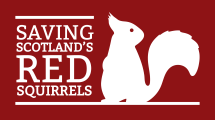Get involved Saving Scotland’s Red Squirrels has been working hard since 2009 to ensure red squirrels continue to have a home in Scotland. Our efforts are making a difference — in many of our project areas red squirrels are already beginning to make a comeback. However, there’s still a lot to do. With the help of our volunteers, we are… […]
Read More…
Over £1m in new funding has been announced to aid red squirrel conservation efforts in key areas across Scotland for the next two years. A total grant of £1,052,796 has been awarded by the Scottish Government’s Nature Restoration Fund, managed by NatureScot, which supports the restoration of wildlife and habitats across the country. The new funds will support the… […]
Read More…
South Scotland Managing squirrelpox to ensure red squirrels continue to have a home in south Scotland Red squirrels were once widespread across the woodlands of south Scotland, but their numbers fell rapidly upon the arrival of grey squirrels. Since their introduction to urban gardens and parks by humans in the late 19th and early 20th centuries, grey squirrels have spread… […]
Read More…
The Scottish Wildlife Trust is pleased to announce that the Saving Scotland’s Red Squirrels project has secured initial funding for a two-year transitional project phase in April 2022. This ‘booster’ phase will enable the project to complete its aims and plan for the long-term future, leaving a legacy of sustainable and community-led red squirrel conservation across the south… […]
Read More…
In February 2023 the Eastern Lowlands Red Squirrel Group (ELRSG) was established with funding through the Red Squirrel Survival Trust. It is an independent group from Saving Scotland’s Red Squirrels as the project does not cover this area. The Eastern Lowlands includes the Kingdom of Fife, Clackmannanshire, part of Stirling and parts of Perth and Kinross. East Lowland… […]
Read More…
Argyll, the Trossachs & Stirling Successfully defending the Highland Boundary Line to protect north Scotland’s red squirrels through strategic control and monitoring With vast tree canopies and plentiful food supply, the forests of west Scotland are home to healthy numbers of red squirrels. However, grey squirrels spreading northwards from the Central Belt and westwards from Stirlingshire and Perthshire continue to… […]
Read More…
With the colder weather covering much of Scotland these last couple of weeks, the crisp air, the flurries of snow, and the loss of the autumnal-coloured leaves lets us know that winter is well on its way! And for our red squirrels, somewhat surprisingly, winter isn’t a season to completely rest. Find out more in the last of our 2024… […]
Read More…
A non-native species is a species that has been introduced to an area where it doesn’t naturally occur. Most of these are harmless but some threaten native species. These are called invasive non-native species (INNS). INNS have been identified as one of the top causes of global biodiversity loss. In Scotland, one of the most prominent INNS is the grey… […]
Read More…
As the warmth and brightness of summer give way to the colourful leaves and shorter days of autumn, the Scottish red squirrel is at their most active on the forest floor – caching food for the colder months ahead. The behaviour of red squirrels in autumn offers a window into the natural rhythm of the seasons, and it is the… […]
Read More…
Saving Scotland’s Red Squirrels is calling on members of the public to take part in the nationwide Great Scottish Squirrel Survey now taking place between 10-16 October (National Red Squirrel Week). Now in its fourth year, the squirrel spotting campaign is hoping to build on the previous successes of this important effort. Saving Scotland’s Red Squirrels (SSRS) is a partnership… […]
Read More…
